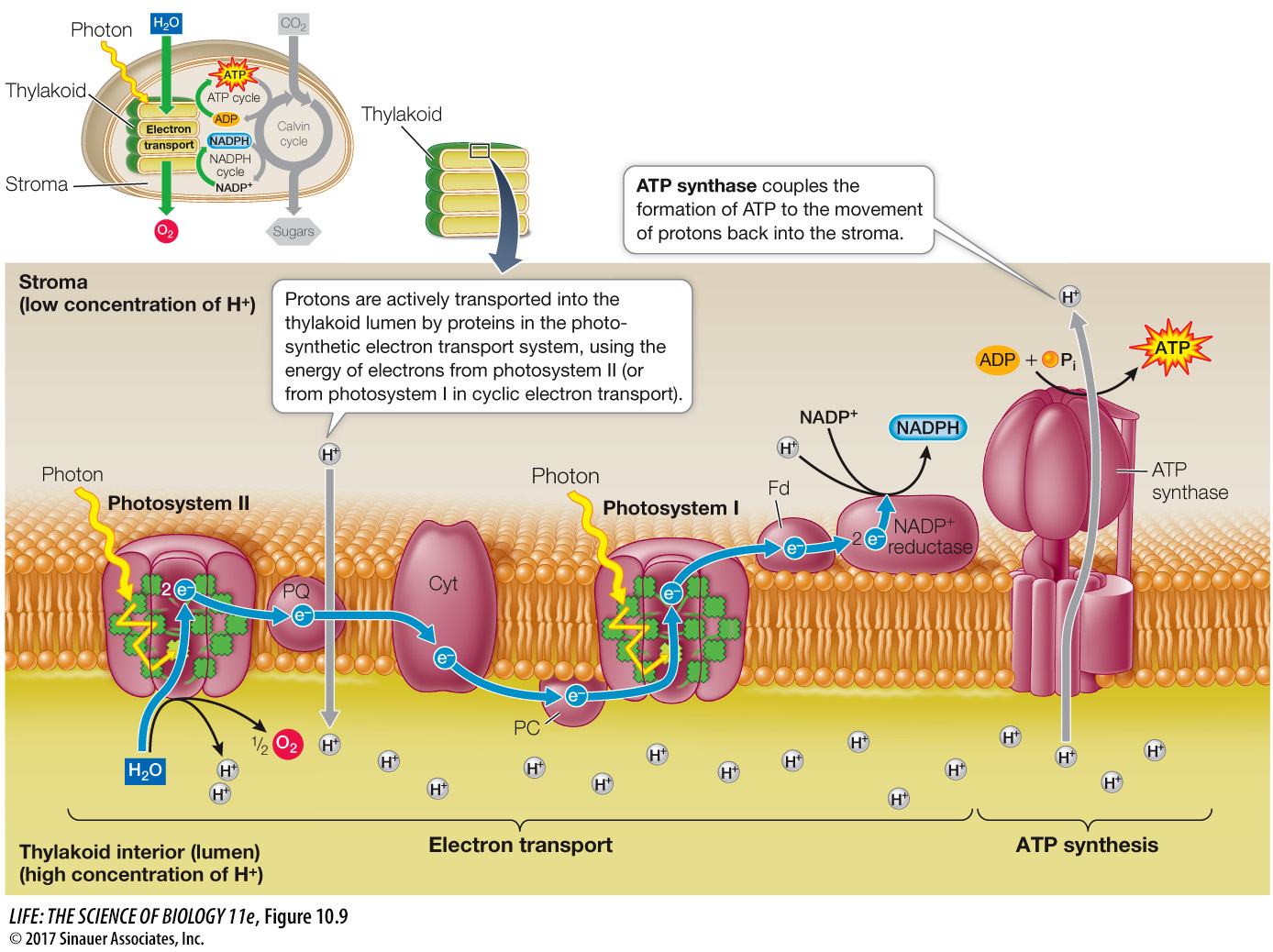Chemiosmosis is the source of the ATP produced in photophosphorylation
In Chapter 9 you learned about the chemiosmotic mechanism for ATP formation in the mitochondrion. A similar mechanism, called photophosphorylation, operates in the chloroplast, where electron transport is coupled to the transport of protons (H+) across the thylakoid membrane, resulting in a proton gradient across the membrane Figure 10.9).

Animation 10.2 Photophosphorylation
The electron carriers in the thylakoid membrane are oriented so that protons are transferred from the stroma into the lumen of the thylakoid. Thus the lumen becomes more acidic (higher concentration of protons) compared with the stroma, resulting in an electrochemical gradient across the thylakoid membrane, whose bilayer is not permeable to H+. Water oxidation creates more H+ in the thylakoid lumen, and NADP+ reduction removes H+ in the stroma. Both reactions contribute to the H+ gradient. The high concentration of H+ in the thylakoid space drives the movement of H+ back into the stroma through protein channels in the membrane. These channels are also enzymes—
The mechanisms of the two enzymes are similar, but their orientations differ. In chloroplasts, protons flow through the ATP synthase out of the thylakoid lumen into the stroma (where the ATP is synthesized). In mitochondria, the protons flow out of the intermembrane space into the mitochondrial matrix.